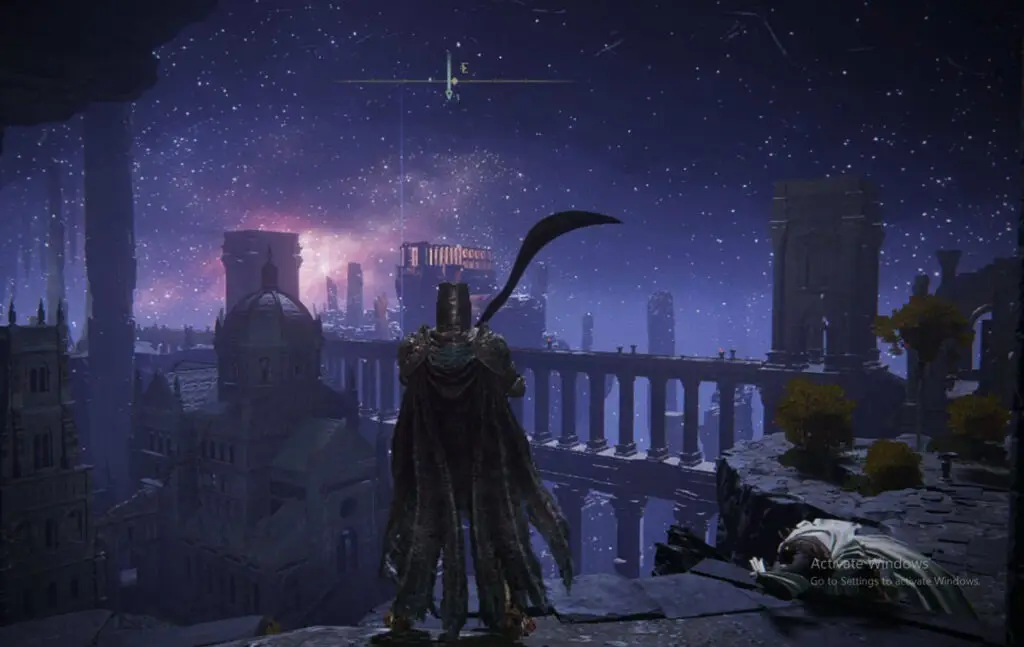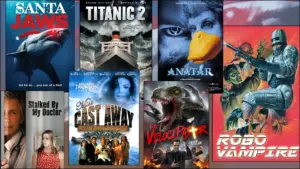With Elden Ring’s first expansion on the horizon and anticipation at a fever pitch, we’ve put together a primer on the beloved, increasingly accessible Souls video game franchise.
What is a Souls game? Is Elden Ring the same as Dark Souls? Do those questions mean nothing to you? That’s okay too!
Until a few years ago I considered myself a lapsed gamer. I played a lot growing up and into my early 20s, but as I got older nothing grabbed me. I would pick things up, put some hours in, put it down and forget about it.
Nothing stuck. Part of it was that I liked single player experiences, and the industry had moved toward multiplayer games. Big-budget single player titles had become a succession of vast open worlds. Sometimes that’s great, but often they felt meandering and pointless. I don’t need every game to require picking herbs or endless weapon customizations. Not that these systems can’t be well implemented (as we will come to see!), but they felt perfunctory.
I missed tailored experiences with a sense of authorship; the original entries in Metal Gear Solid or Resident Evil come to mind. Linear, story-driven games I did enjoy, like The Last of Us, had grown cluttered with unwanted hand-holding for even their simplest puzzles. I never sought out “hard” games, and would not have identified that as the problem. It wasn’t difficulty for the sake of difficulty that I was after (it still isn’t). There was just something missing, and I felt I couldn’t justify the expenditure of time.
Dark Souls changed all that.
Souls, Darkly Spawning…
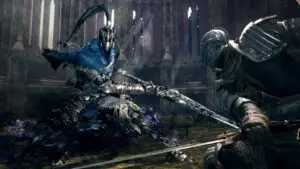
The Souls franchise began in 2009 with FromSoftware’s landmark Demon’s Souls, published by Sony for the PlayStation 3. FromSoftware was founded in Tokyo in 1986, and began developing their first games for the PlayStation in the early 1990s. Over the next ten years they would release a number of entries in their King’s Field and Armored Core franchises, among others, and though some of their games sold respectable numbers, by the mid-aughts their financial fortunes were uncertain. That would soon change.
Demon’s Souls was a FromSoftware fantasy action RPG (if that’s gibberish, hold on) in development at that time which had fallen into limbo. A low-level designer named Hidetaka Miyazaki took on the project, and what he helped build would go on to spawn a franchise and a subgenre, land him the job of company president, and turn FromSoftware into one of the most influential studios in the world.
Though Demon’s Souls was a tepid success, FromSoft partnered with Bandai Namco and published their second iteration, Dark Souls, in 2011. That became an instant cult hit and was followed by Dark Souls II in 2014. While the Souls games are categorized as dark fantasy, FromSoft refined their formula with the Lovecraftian gothic horror classic Bloodborne in 2015, and completed the Souls trilogy with Dark Souls III in 2016. Then came the long wait for 2022’s Elden Ring. (Okay, there was Sekiro in 2019 but that’s another article).
Altogether these games are known by the cheeky portmanteau “Soulsborne,” and have begat dozens of imitators with varying success. These imitators are referred to as “soulslike” games.
So: Soulsborne games are action RPGs. Let’s break down what the means, and what sets them apart from similar games.
How RPGs Became Action RPGs
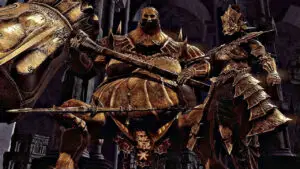
RPG stands for role-playing game. That term has been around since the 1970s, but in video games can broadly be defined as referring to games wherein your character gains experience through their actions and becomes more powerful over the course of the game. These usually feature fantastical characters and settings, and often (but not always) involve branching structures that follow a main quest, as well as various side quests that you can choose to undertake to net more experience and advance the game’s narrative. Popular examples include Final Fantasy, The Witcher, Skyrim, Diablo, and many, many more.
Traditionally, as in Final Fantasy, combat is undertaken through the use of menus. Fights do not play out in real-time. Instead, you switch through the various members of your party and choose which attacks or abilities they will perform; then the enemy takes their turn. This is what’s known as a turn-based RPG.
An action RPG, like the Soulsborne games, refers to an RPG in which combat does take place in real-time. You push a button and your character performs an action. This can be more challenging as it relies on reflex, though it varies greatly from game to game.
Overall the RPG genre is known for the scope of its games, and their unrivaled sense of exploration, adventure and discovery.
With Demon’s Souls, Miyazaki reshaped a decades-old genre grown stale. The vast majority of its core ideas would go on to define the franchise and ensuing subgenre. Let’s get into what those differences are.
Gameplay Where Decisions Matter

In most RPGs, when you kill an enemy or complete a quest your character (or party) gains experience points. Eventually your character will either automatically level up (you’ll get more powerful attacks, more health, etc.), or you will be able to assign those points to specific attributes to grow and customize your character and playstyle.
In Souls games this is still true, however the experience points, or “souls”, that you collect are ALL LOST AS SOON AS YOU DIE. If you can successfully return to the location of your death, you can retrieve those souls from your own corpse. But if you die while trying they are gone for good.
This single concept creates a deliberate playstyle and a constant sense of tension. Your decisions matter. Your mistakes matter. There are real consequences.
When you do manage to level up, you get a single point. You distribute these points among a variety of different attributes which accommodate a huge diversity in playstyles. But each level, you make only one choice. Better make it count.
Another innovation was the use of checkpoints, or “bonfires”. In a Souls game you cannot save your progress through a pause menu. Rather, your progress is saved at various bonfires placed around the world. These can be VERY far apart, though often your progression through a large branching area will open up shortcuts back to earlier bonfires. When you rest at a bonfire you will fully recover your health, but all the enemies in the area will repopulate.
If you die or turn off the game, you will reload at your last bonfire. Any consumable items you have used will NOT regenerate. Used a powerful item on the last boss fight and died anyway? Too bad, it’s gone now. There are no “save files” in the traditional sense. Your game is your game.
Your decisions matter. Your mistakes matter. There are real consequences.
Victory: A Zen State, Not Button Mashing
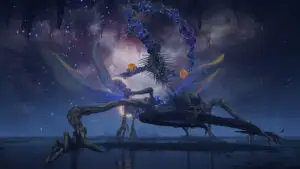
The defining points of difficulty in any Soulsborne game are those endless and spectacular boss battles. With memorable character designs and grandiose set pieces, the more you die the more each experience is burned into your memory.
And you are going to die. A lot. But that really is all part of the fun. Victory can require a kind of Zen state, where death is the expectation and anything beyond that is progress.
Our expectation of difficulty is a learned experience. The industry has made games increasingly “accessible” (partly because we no longer require spikes in difficulty to increase playtime), and in so doing has created experiences which are not in themselves rewarding. The story can be great, the game can be fun; but nothing learned, nothing gained.
Souls games have no difficulty modes. The game is the game, as intended.
Death Becomes a Tool
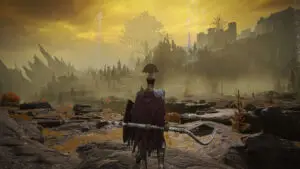
Miyazaki understood that character death can be used as a tool. Games have the capacity to teach their players, and not only through endless tutorials and wordy popups. In fact, that sense of learning, wonder and accomplishment is greatly increased when the player feels they have discovered something for themselves.
Each Soulsborne game starts you as the lowliest of the low. Undead, Paleblood, Unkindled, Tarnished. A near-naked vagabond. But you are not alone. While Souls games are predominantly single-player, Demon’s Souls provided a unique innovation for player interaction. You are in fact always online, and players can leave each other written messages (with limitations) throughout the levels as they go.
This in itself mitigates difficulty in a completely new way. Enemy about to ambush you from the left? Maybe that’s why the whole hallway is covered in messages. Giant pit in the floor, or a trap that shoots fire arrows? Better read the messages. The more players die, the more they contribute and help one another.
In addition to this, bloodstains left on the ground can replay players’ deaths when activated, and translucent specters of players’ past actions fill the world. See a little ghost fall off a ledge? Area looks okay but the ground is covered in bloodstains? Watch out.
Narrative Revealed in a Fractured World
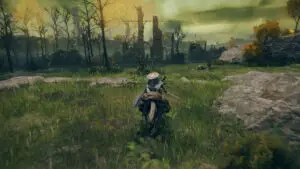
Each entry in the series takes or leaves a host of other tropes which I won’t detail here, but the last hallmark I will cover is the narrative, and the way that it is conveyed.
If you had never played a Souls game, picked up Dark Souls, beat it, and thought it had no plot, you would be forgiven. We have been conditioned to understand that if a game has a narrative, it will be imparted to us through cutscenes. These can be great (see Metal Gear Solid) but are often wordy pauses to gameplay which wrest control from the player.
While Souls games feature the occasional cutscene wherein a hideous boss introduces itself, or transforms spectacularly to begin a second phase, by and large the games are bereft of any division in gameplay. Plot and character are instead detailed in item descriptions. The games will never tell you this. Every weapon, piece of armor, consumable item in the game, will have a short item description when found in the inventory menu. This will tell you what the item does; but it will also offer brief insight into how it came to be there or what it is related to. By piecing these together the player can discern a fractured portrait of a fractured world.
The environments and enemies themselves are designed with a maniacal adherence to detail. Nothing in a Soulsborne game is there by accident. Every environment tells a story. (As do the odd characters scattered throughout. Make sure you talk to them all. More than once!) Those stories are often about piecing together whatever personal and cosmic events have led to the ruin of the world you wander; and how you will choose to mend or transmute those circumstances upon the game’s completion.
The worlds of FromSoftware are crafted with a solemn majesty. They existed before you and they will remain when you are gone. They exist whether you choose to visit them or not.
The player is often left with more mysteries than answers. An entire sub-industry of YouTube channels with millions upon millions of views has grown up around decoding the history of these worlds. Miyazaki has said (to paraphrase) that his most memorable narrative experiences as a child were derived from picking apart western fantasies written in languages he could not understand. These half-deciphered dreams and ideas were what excited him most, and he has tried to replicate that experience in his games.
Which brings us to Elden Ring.
Elden Ring: A Series of Triumphs
In 2017 FromSoftware began developing their follow up to the Dark Souls trilogy, and brought the mechanical core of those games to an open world. Miyazaki teamed with George R.R. Martin to flesh out the world’s deep history and lore, and they have managed to craft a sprawling universe and daunting world map with the same level of care as their more linear games. The result is a truly singular experience.
The game is hugely more accessible to new players by virtue of its open world. Without sacrificing the game’s difficulty, the player can simply leave any encounter in which they feel outmatched and return later. Just hop onto your spectral steed and ride until you find the next crumbling ruin or dark cave.
And yet because of the inherent difficulty, each small encounter is imbued with meaning. No more empty maps filled with meaningless collectibles. Every enemy defeated is a small triumph, and every triumph is another peek behind the curtain.
Precision, Patience, Discipline
Checkpoints, or “Sites of Grace,” are more generously scattered throughout the Lands Between. In addition, a new “spirit summon” system has been added which allows the player freer access to various companions that will fight alongside them. These can take some heat off the player when it’s needed most, or dish out a good amount of damage on their own. And more experienced players don’t have to use them if they want the extra challenge. It’s an ingenious way to make the game more inviting while preserving the core experience. No difficulty mode necessary. We all beat the same game.
It is this pairing of tuned difficulty and aesthetic precision that makes these games worth playing, and returning to, as I have done again and again. And I would urge everyone, even non-gamers, as strange as that may sound, to give it a go.
“Games as art” is a tired conversation, but I would argue the ambition and coherence of vision, and exacting standards of execution, make FromSoftware’s games the closest to that categorization we have ever seen. They are simply more than the sum of their parts. They teach discipline and patience through wonder and mystery. I cannot ask for more than that from a piece of entertainment.
Leisure time comes at a premium, I know. But if you were just going to watch Netflix anyway – why not give the Lands Between a try instead?
After two years of waiting, as of the morning of my writing this, Elden Ring’s hotly anticipated Shadow of the Erdtree DLC has gotten its first trailer and a launch date of June 21, 2024. It promises a litany of new bosses, legacy dungeons and massive environments. It’s never too late to catch up.

